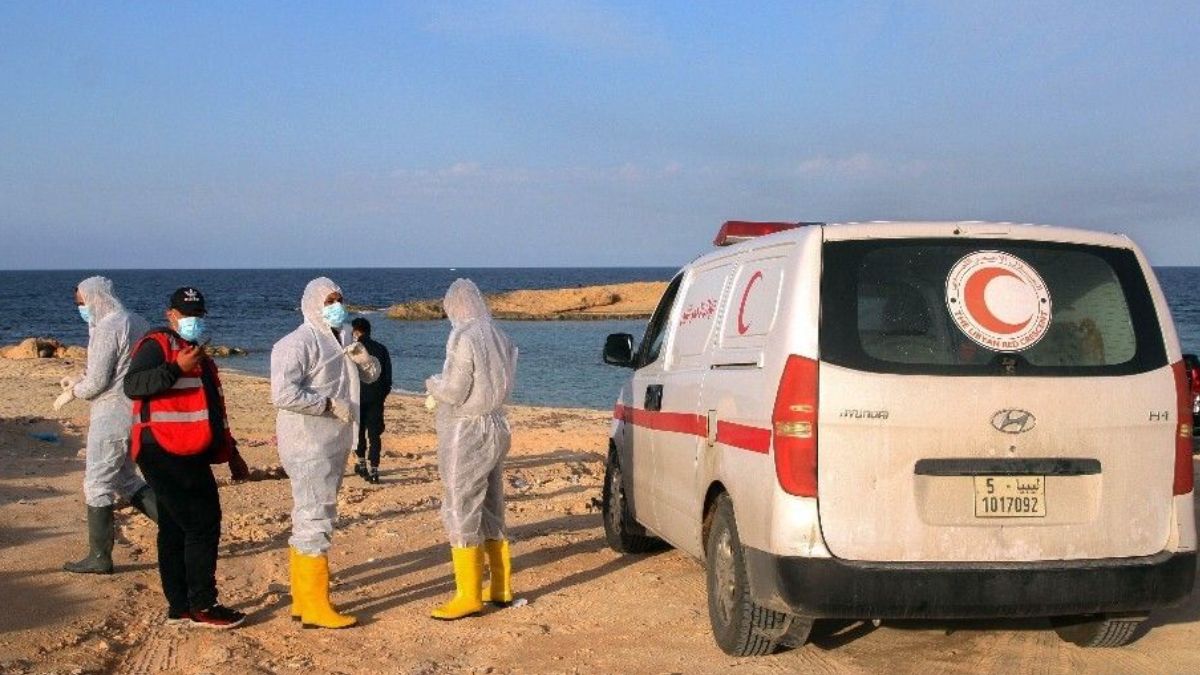OPINION | In war-torn Libya, illegal migrant-smuggling economy is flourishing
 United Nations said that 42 migrants were missing and presumed dead after a rubber boat capsized off the Libyan coast last week | via X/AFP
United Nations said that 42 migrants were missing and presumed dead after a rubber boat capsized off the Libyan coast last week | via X/AFP
According to the United Nations International Organisation for Migration (IOM), this week, 42 migrants were presumed dead after a shipwreck near Libya. It includes 29 Sudanese, three from Cameroon, and two from Nigeria. With a total of 49 migrants on board, the rubber vessel departed from the northwestern coastal town of Zuwara. It is not new, because, as per the IOM, by the end of October 2025, around 527 people lost their lives off the Libyan coast in 2025 alone. The scenario not only explains these migrants’ vulnerable condition, but also the other side of Libya’s flourishing migrant smuggling economy.
The term ‘flourishing’ aptly describes Libya’s migrant smuggling economy in 2025. It does not imply chaos; instead, it signifies the maturation of a decentralised, brutal, and highly profitable market that has evolved from a simple ‘pay-to-passage’ service into a core component of Libya’s entrenched conflict economy. As of 2025, the profit-driven industry is not thriving, despite the Libyan state, but rather through its political fragmentation, has evolved into a sophisticated abuse-for-profit business model.
From the study conducted by Chatham House in 2016, migrant smuggling and trafficking generated US$978 million within that year. A separate 2025 analysis by the United Nations Support Mission in Libya (UNSMIL) estimates from 2021 that the armed groups earned US$1 billion annually from trafficking and EU-funded detention contracts. To better understand this condition, it is essential to examine the state of Libya.
The bedrock of this entire economy is the collapse of the Libyan state. The 2011 ousting of Muammar Gaddafi did not just create a power vacuum, but it also shattered the state’s monopoly on violence and borders. In its place, a constellation of competing militias, tribes, and quasi-governmental bodies emerged. Each of these entities controls small and resource-rich fiefdoms. Currently, Libya remains divided between the Government of National Unity (GNU) in Tripoli and the Libyan Arab Armed Forces (LAAF) backed ‘Libyan Government’ in the east. However, this condition creates a fragile border and poor security inside the state.
Inside this vacuum, a web of armed groups, local militias, and state-affiliated security forces has risen. The Human Rights Watch rightly pointed out that these are not just criminal gangs, but hybrid actors. Groups operating under the umbrella of the GNU’s Ministry of Defence or the LAAF’s successful infiltration and control of key state institutions, such as the Directorate for Combating Illegal Migration (DCIM) and units of the Libyan Coast Guard (LCG).
Meanwhile, according to the US State Department, in 2025, there is ‘systemic official complicity’ in trafficking crimes. The criminalisation of the state, particularly in coastal cities like Zawiya, means that the people regulating the smuggling routes are the same who are receiving state salaries and, in many cases, international funding. Instead of bringing an end to the smuggling economy, these actors seek to manage and tax it. However, the economy is flourishing not only from a one-way boat trip, but through a detention-for-ransom cycle.
From the reports published by IOM this year, over 84 percent of migrants originated from Libya’s six neighbouring countries: Niger (31 per cent), Egypt (26 per cent), Sudan (17 per cent), Chad (5 per cent), Tunisia (4 per cent), and Algeria (less than 1 per cent). Firstly, the smugglers use established networks to move migrants from countries like Sudan, Eritrea, Niger, and Chad (all these countries share a boundary with Libya) to southern Libyan cities like Sabha and Kufra.
Secondly, these migrants are sold or transported to coastal hubs. Here, the relationship shifts from client to smuggler to captive to captor. And thirdly, migrants are funnelled into a network of official and unofficial detention centres, which is described as ‘unimaginable horror’ by the UN. Many of which are run by the very militias that control the region. Inside these centres, migrants are systematically tortured, starved, and subjected to sexual violence while being forced to call their families asking for ransoms.
International agencies, such as the European Union (EU), have made efforts to curb this illegal migration at their borders. The EU’s ‘border externalisation’ policy is one such case, which funnels hundreds of millions of euros into Libya to manage migration. Eventually, it became a direct subsidy for the trafficking industry. The policy continues to exist, which primarily funds, trains, and equips the LCG to intercept boats in the Mediterranean and return migrants to Libya. However, it has created a dire situation, where instead of returning migrants to safety, the LCG brings them to the DCIM-run detention centres. From there, the migrants are abused and illegally trafficked, generating revenues for the very militias the LCG aligned with.
The situation benefits Libyan actors, including the LAAF’s Haftar, in the east and the militias in the west. It leveraged the threat of migration to extract political and financial concessions from Europe. In short, Libya’s migrant smuggling economy is no longer a shadow economy; instead, it has become a regulated and systemic feature of the country’s political economy.
Nirmalshankar M is a doctoral candidate at the Centre for West Asian Studies, Jawaharlal Nehru University, New Delhi.
Middle East